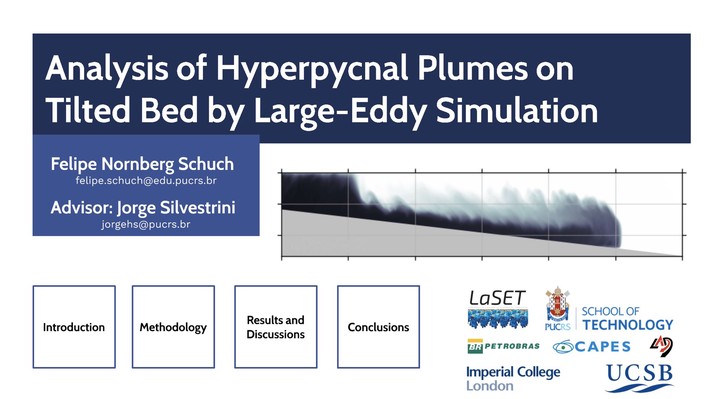Analysis of the Plunging of Hyperpycnal Flows on Tilted bed by Large-Eddy Simulations

Abstract
Hyperpycnal flows are observed when the density of a fluid entering in a quiescent basin is greater than that in the ambient fluid. This difference can be due to temperature, salinity, turbidity, concentration, or a combination of them. When the inflow momentum decreases, it eventually plunges under the ambient fluid and flows along the bed as an underflow density current. This study is relevant in terms of the health of ecosystems in the regions of river deltas, in the management and operation of reservoirs and in the field of geology, since old sand deposits can preserve records of climatic and tectonic environments, in addition to become important hydrocarbon reservoirs. In the present work, 3D numerical simulations are performed for the hyperpycnal flow evolving over the bed of a tilted channel. Using numerical techniques designed for supercomputers, the incompressible Navier-Stokes and transport equations are solved to numerically reproduce the experiments of Lamb et al. (2010). This study focuses on the presentation and validation of a new numerical framework for the correct reproduction and analysis of the plunging phenomenon and its associated features. A good agreement is found between the experimental data of Lamb et al. (2010), the analytical model of Parker e Toniolo (2007) and the presented simulations. A new equation is proposed in order to predict the critical depth for plunging, including the role of the settling velocity and the bed slope. The high spatiotemporal resolution of the numerical simulations allows to verify the initial hypotheses established and a good agreement is found not only for the observed stationary plunging position, but also for the temporal evolution until reaching such a position. A negative value for the mixing coefficient was observed for the first time for the hyperpycnal flow in a tilted channel. This indicates that if the settling velocity of the suspended material is high enough, the submerged flow may lose fluid to the environment (dentrainment), instead of incorporating. Finally, a new scenario takes into consideration the interstitial inflowing density slightly different from the ambient, that is changed from fresh to salt water. Results show that the ambient stratification is not relevant when there is no settling velocity, as long as the density difference stays constant. On the other hand, a new dynamic is observed at the plunging zone and downstream of it when in the presence of sedimentation, evidenced by the upwards convection and intensified mixing between both fluids.